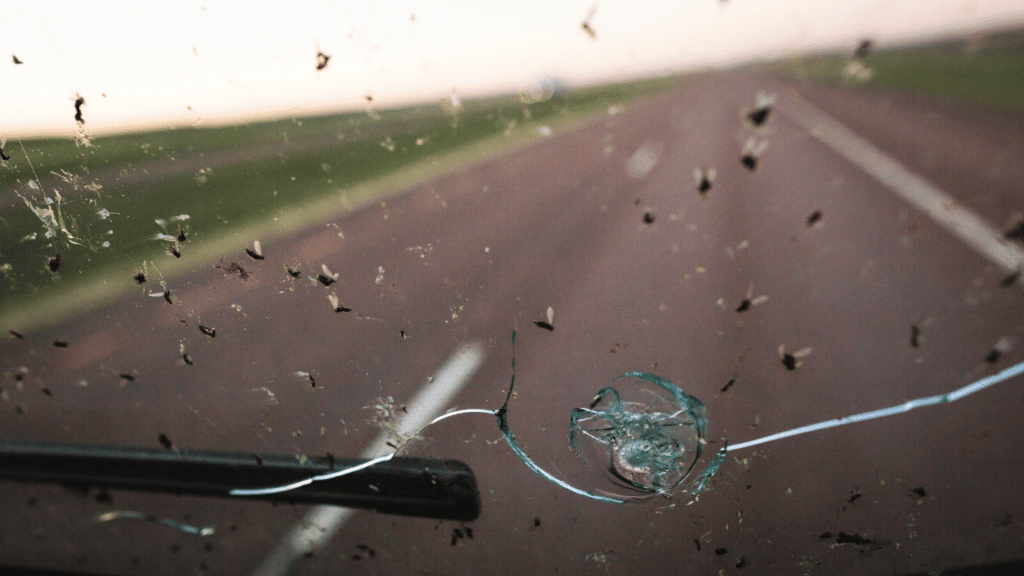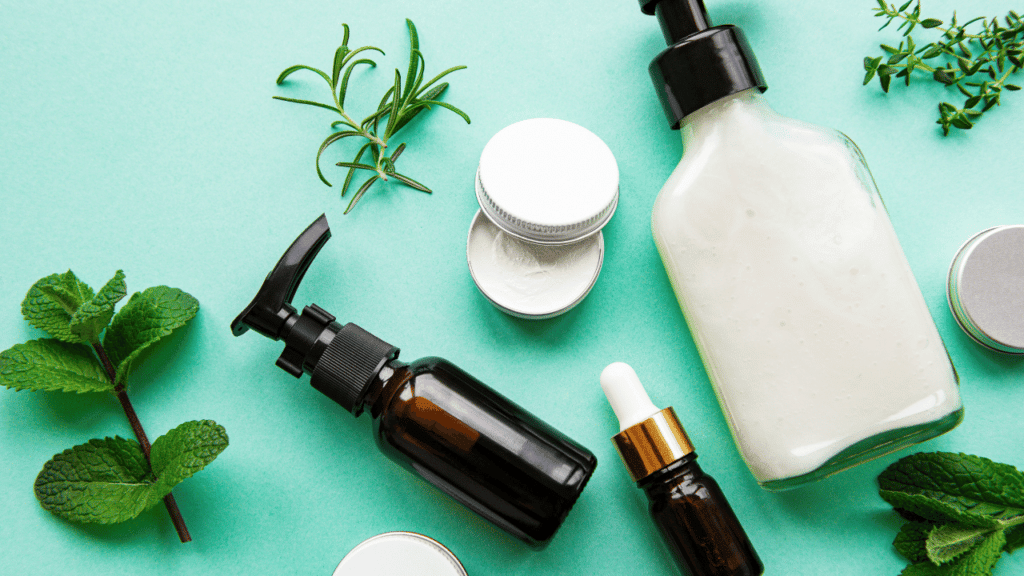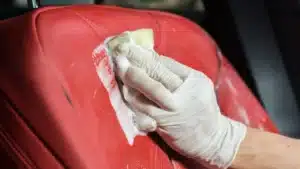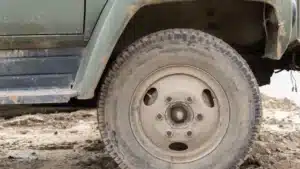It’s impossible to avoid bugs when you are driving, so it is essential to learn how to get bugs off car parts. During bug season, hundreds of insects hit your vehicle and end up drying onto your grill, hood, and windshield. It can be difficult to remove them. A quick spray with a hose is typically not enough to wash them away. If you’ve been on a long road trip or parked your vehicle in the sun while it’s still dirty, removing bugs might take a lot of effort.
Luckily, there are many different options for how to get bugs off car parts. You can try homemade cleaning solutions, opt for specialized bug removal products, or take steps to prevent bugs from sticking to your car in the first place.
Here is everything you need to know about how to handle bugs that stick to your car.

How to Clean Bugs off Car Parts Using Home Remedies
Often, homemade solutions can provide enough cleaning power to remove bug guts from your hood and windshield. However, you should always make sure that you use your ingredients in the correct proportions and follow the proven method.
Some ingredients, such as vinegar or Windex, can actually damage your car if you apply them incorrectly or leave them on the surface for too long after you wash your car.
Here is a closer look at the methods for how to get bugs off car parts with ingredients you already have in your home.

1. Clean Bugs Off a Car Using Warm Water and Soap
If you are able to respond quickly, you may be successful in removing bug guts with a regular car wash. However, instead of using water from your garden hose, you should use warmer water.
- What You Will Need
- Car wash soap;
- A bucket;
- A sponge or microfiber towel;
- A nonabrasive brush;
- Warm water.
- Step by Step Instructions
- Mix the soap and water in a bucket according to the manufacturer’s instructions.
- Use warm tap water instead of cold water from a hose. Do not use hot water.
- Use a sponge or cloth to scrub the soap mixture on the car, using a circular motion.
- Rinse the car with a hose.
- If the bug guts do not come off, you can use a nonabrasive brush, such as a nylon brush, to scrub the soap into the body more vigorously.
If you work quickly and get to the bugs before they dry onto the car windshield and paint, this option could be effective.
2. Start Cleaning Bugs off Your Car With a Pressure Washer
A pressure washer is another option for removing bugs that have not bonded to the surface of your vehicle. A pressure washer delivers water with enough force to remove some dirt and insect matter from your car, but since it is only liquid, it will not damage your paint.
- What You Will Need
- A pressure washer or a hose with a nozzle that can deliver a high-pressure stream to your car’s surface.
- A cloth.
- Step by Step Instructions
- Park your car in an open area, such as in the middle of your driveway.
- Start about 10 feet away and begin spraying the car.
- Move closer if needed until you notice that the water is removing the stains.
- Follow the manufacturer’s instructions. However, you should never get within 1 foot of the vehicle with the nozzle.
After the insect material is clean, you should dry the car to avoid water stains.
3. Get Dead Bugs off Car Paint Using Baking Soda
Baking soda is another cleaning agent that you likely have around your home. It can serve as an effective insect remover if you apply it properly. With a baking soda paste, you can target stubborn stains that won’t come off with regular washing.
- What You Will Need
- Baking soda;
- A bowl or bucket;
- Water;
- A microfiber cloth or brush.
- Step by Step Instructions
- Create a paste using one part water and three parts baking soda.
- Apply the paste liberally to the bug splat areas on your car.
- Scrub the paste into the stain using a circular motion.
- Rinse with water and repeat if necessary until the bug splats disappear.
Baking soda is effective at removing bug splatter. You can also spread it directly on your car and wipe it with a damp cloth to remove bug guts that aren’t dried yet.
4. Get Bug Stains off Car Paint Using Bug Remover Sponge
Specialized bug remover sponges are microfiber clothes with a rigid component that can remove insect matter and other stubborn natural stains. For example, it can remove tree sap.
- What You Will Need
- A bug remover cloth or sponge from an auto parts store;
- Water;
- A towel;
- Car soap or another cleaning agent (optional).
- Step by Step Instructions
- You must use water or water and soap to lubricate the bug sponge, otherwise, you risk scratching your car paint.
- Wet the sponge and scrub the bug material using a circular motion.
- You can use a cleaning agent like soap or baking soda paste together with the sponge.
- Once the marks disappear, rinse and dry the surface with a towel.
Bug sponges are an option if you want to use old-fashioned elbow grease to remove insect stains.
5. Cleaning Bugs from Car Surfaces with Fabric Softener or a Dryer Sheet
Fabric softener sheets for your dryer are actually ideal if you are trying to clean bug splats. They are slightly abrasive without causing scratches, and they become slightly soapy when wet.
- What You Will Need
- Water;
- Fabric softener sheets;
- A towel.
- Step by Step Instructions
- Moisten the fabric softener sheet with water until it has a soapy texture.
- Scrub the bug remains in a circular or up-and-down motion.
- When the stain is gone, rinse thoroughly with a hose or wet sponge.
- Dry the area to avoid water spots.
Dryer sheets are an ideal solution because most people already have them at home, and you can use them right out of the box without having to create a mixture of ingredients.
6. Removing Bugs from Car Windows and Paint with Vinegar
Vinegar has acidic properties that help it break down bio-materials like insect carcasses. However, you need to be careful of vinegar because it can damage your vehicle if you are not careful.
- What You Will Need
- A spray bottle;
- White vinegar;
- Water;
- Two clothes.
- Step by Step Instructions
- Create a mixture with one part vinegar and three parts water.
- Put it in a spray bottle and spray it on the surface with bug stains.
- Let the mixture sit for a few seconds before scrubbing it with a cloth.
- Add more vinegar mixture if needed and continue scrubbing.
- After scrubbing, give the surface a good wash and dry using microfiber towels.
Vinegar is another cheap homemade option, but you need to rinse it off so that it does not damage the car paint.
7. Get Dried Bugs off Car Exteriors Using Magic Eraser
Mr. Clean’s Magic Eraser product can remove bug stains, but it can be abrasive and cause scratches if you do not use it correctly.
- What You Will Need
- Mr. Clean Magic Erase;
- Water.
- Step by Step Instructions
- Get the Magic Eraser wet.
- Scrub gently on the insect stains, being careful not to use too much pressure.
- Rinse and dry the affected area after you are done.
Do not use the Magic Eraser when it is dry because it will scratch your car.
8. Use Windex to Clean Bugs off Car Glass
Of all cleaning products for cars, Windex is one of the most effective for cleaning bug guts off of windows.
- What You Will Need
- Windex;
- Microfiber clothes or terry cloth.
- Step by Step Instructions
- Windex comes in a spray bottle, so you need to spray the affected area and let the liquid sit for a few seconds.
- Begin wiping the car quickly with broad circular motions.
- When the job is done, rinse the car clean to remove all the Windex residue.
Windex comes in varieties with and without ammonia. The non-ammonia variety is better for car paint.
9. Use WD-40 to Remove Bugs from Car Exteriors
WD-40 is known as a lubricant. It can also bond to biological materials like bug carcasses.
- What You Will Need
- A spray can of WD-40;
- A soft cloth or sponge.
- Step by Step Instructions
- Wipe as much dirt as possible off the surface of the car.
- Spray WD-40 on the affected area.
- Let the WD-40 sit for 5 to 10 minutes, then start wiping it off with the cloth.
- You do not need to clean off the WD-40 after you finish.
WD-40 does not work on the entire vehicle, but you can use it if you have stubborn stains that do not come out with other methods.
How to Remove Bugs from Car Paint Using Bug Removal Products
Specialized bug removers offer an alternative to homemade cleaning solution options. These products are designed to remove bugs from your car, and they can also work on other types of stains. Read more about how to remove stains from car paint
The advantage of these items is that they are formulated to work without damaging the car’s paint or glass. The drawback is that they cost more than homemade cleaners.

1. Try Meguiar’s Ultimate Waterless Wash
Meguiar’s Ultimate Waterless Wash is designed to work without water. It comes in a spray bottle and requires only a cloth.
This product also contains synthetic car wax that provides a layer of protection that gives that car a shine and protects against future bug hits.
- Step by Step Instructions
- Spray the product on your car and let it sit for several minutes.
- Wipe the vehicle with a cloth to remove excess dirt, grime, and bug carcasses.
The primary advantage of Meguiar’s is that it does not require water.
2. Try 3D Bug Remover
3D Bug Remover is an enzyme-based cleaner. This means it bonds to organic matter and dissolves it without harming inorganic compounds. It can remove dead bugs without dissolving the car paint.
- Step by Step Instructions
- Wipe the surface of the vehicle to remove excess dirt.
- Spray the 3D Bug Remover and let it sit on the stains.
- Wipe the entire area clean.
The bug stains should come off as you wipe the surface. This product can work on tough stains, though it is not necessarily meant to cover your entire car.
3. Try Turtle Wax T-520A Bug and Tar Remover
Turtle Wax is a well-known brand. Its Bug and Tar Remover can dissolve stains, which you can then remove with a brush or cloth.
- Step by Step Instructions
- Wipe the surface to remove excess grime and dirt.
- Spray the Bug and Tar remover on the surface and let it sit on the stains as directed.
- Scrub the surface until the bug remains are removed.
Reviews suggest that you may have to scrub hard with a non-abrasive cloth to remove the bug guts completely.
4. Try Degreaser Liquid
Degreaser liquids can work on organic materials like bug carcasses. These products work by bonding to the matter and breaking it free from the car surface. You can then wash the degreaser product off, and the bug matter should come off with it.
- Step by Step Instructions
- Apply the degreasing agent to the bug marks.
- Wait for the amount of time listed on the manufacturer’s directions.
- Wipe the surface clean.
The products work for road grime and other types of stains, as well.
How to Prevent Bug Stains from Sticking to Car Surfaces.
There are plenty of options for how to get bugs off car exteriors. However, you can also take steps to keep them from sticking to the surface in the first place.
Here are the most effective methods for avoiding bug stains.
Prevent Bug Splatters on Your Car with a Bug Deflector
A bug deflector is a thin layer of plastic that sits on the grill of your car. It has two purposes. First, it deflects bugs that would otherwise hit your hood and windshield. Second, it channels the airflow around your vehicle so that bugs get swept to the side rather than splattering on your car.
Bug deflectors can also channel pebbles and other road debris from your car. They are quite effective, and installing them is often a DIY project.
Prevent Bug Splatter Stains with Wax
Car wax may not prevent bug splatter, but it can make it easier to get the carcasses off before they bond to the exterior.
Wax creates a clear coat between the air and your car’s paint. The insects become embedded in the wax, but they do not actually stick to the paint. This makes it easier to wash them off with regular soap and water.
Use Bug Barricade
Bug Barricade is another type of clear coat product. It produces a water-soluble barrier that keeps stains from getting directly on your paint and maintains a clean surface.
The coating actually creates a lubricated surface that allows bugs to slide off after they hit your car. The product comes in a spray bottle. You apply it and spread it evenly with a cloth so that it covers the front of your car, where insect impacts normally occur.
Use Diamondite Love Bug Defense Kit
Diamondite Love Bug Defense Kit is another product that basically lubricates the exterior of the car so that bugs and other debris do not adhere to the paint as you are driving. It also helps to neutralize the acids that bugs naturally have in their bodies. If left on the vehicle, these acidic fluids can have a corrosive effect. Read more about how to clean love bugs off car
Diamonite also offers bug removal products that can dissolve those insects that do actually stick to the surface.
Use Paint Protection Wrap
A different approach is to use paint protection wrap. This clean film is meant to protect newly painted cars. You can apply it before a road trip. When bugs hit the surface, they will embed in the wrap, but not reach the actual car surface.
After your trip, you can remove the wrap, and the bug stains will come off with it. This is not a cost-effective option over the long term, but it can help during bug season, especially if you have a new car or a new paint job.
Use Rejex
Rejex is a polymer coating that provides long-term protection for a car’s exterior. It lasts longer than wax and provides a smooth surface that deflects insects and road debris.
Rejex has an added advantage. The polymer coating provides a barrier that keeps the corrosive acidic fluids inside of bugs off of the paint.
The primary advantage of Rejex is that it lasts from 6 to 12 months, which is longer than standard wax.
Use Windshield Protector Covers
Clear protective windshield covers provide a barrier against bug strikes in the place where most occur. You can place the cover on your windshield during bug season and remove it afterward.
These products can provide other advantages too. They can deflect UV rays and keep the windshield from shattering in the event of an accident.
What Happens If You Don’t Remove Bugs from Car Paint?
When bugs hit your car, they create splatter that can ruin the smooth, shiny appearance of a newly washed and waxed vehicle.
However, the stains can be difficult to remove. Unfortunately, the longer you wait to clean the car, the harder it is to get the insect remains off your paint and windows.
The fluids inside a bug contain a lot of acids. These acids can eventually eat into the clear coat and the paint on the car. Once this happens, they create divots that can attract road grime and dirt, compounding the damage.
FAQ
What works best to remove bugs from cars?
In most cases, homemade remedies will work fine to remove bug stains. However, if you do not remove the stains right away, you may need to purchase a specialty product that uses enzymes or chemicals to dissolve the organic matter so that you can wipe it away without damaging your paint.
How do you remove old bugs from car paint?
If bugs have been on your car for a long time, they may seem bonded to the paint. You can still remove them using an enzyme-based cleaner, WD-40, or a vinegar and water solution.
After removing the bugs, you may need to add a coat of polish to return the exterior to its original shine and fill any spots affected by corrosion.
Does Goo Gone remove bugs from cars?
Goo Gone is an option for removing bugs, tree sap, and other common substances from your car. Technically, this product is an adhesive remover, so while it can remove bugs that have not been stuck to your car for too long, it is not specifically made for this task.
Will vinegar remove bugs from car paint?
A vinegar solution can remove bug guts from car paint. You can create a mixture of between 20% and 50% vinegar, depending on how long the bugs have been on the car exterior.
When using vinegar, you should always wash the car’s surface as part of the cleaning process. Vinegar is extremely acidic, and it could damage the car paint if you do not remove the remaining residue.
Do bugs ruin car paint?
Bugs will not ruin car paint as long as you take proper precautions and clean your car regularly during bug season. Bugs only become a problem if you do not clean them off your car. They contain acids, which can damage paint and cause corrosion that could lead to rust or peeling. Read more: How to Fix Clear Coat Peeling
How to Get Bugs Off Car Parts
The best ways to get bugs off car exteriors include using homemade cleaners or purchasing specially-made products designed to dissolve organic matter without harming paint.
You can also take steps, such as adding bug deflectors or using a polymer-based coating to keep bugs from sticking to your car in the first place.
In addition to keeping your exterior looking shiny and attractive, the methods to keep bugs off your car can also help you avoid damage to your paint and corrosion due to the high acid content of bugs.
Related Content:



